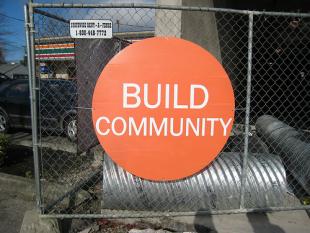Ten Tips for Community Managers


Your office is a community: A network of people connected through a common theme, associating themselves voluntarily around a common purpose. On your worst days, when you’re thinking of tossing your laptop through a window, it may not feel like that. But building your community, is a powerful way to improve connectedness and facilitate learning.
As a learning leader, it’s your role to support, connect and enable your community members by diagnosing skills gaps or organizational obstacles that slow your team down and developing creative solutions.
This is a new way to think about doing your job. You’re not just a developer, or an administrator, or a manager: You’re a community builder. You support and strengthen your community not just by developing the content and resources they need, but by connecting them to one another.
A Community Manager’s Goals
A community approach to learning is the opposite of traditional one-way information distribution models. As a community manager, you’re not a distributor - you’re a connector. Your goal is to enable fellow community members to become vocal sharers who develop their own conversations and explorations.
You will find, create and share the most relevant information while building connections between your community members. You’ll introduce people who can share information to one another. You’ll facilitate connections between people and to information in person, over instant messaging or through social networks. You will be the host of the party - introducing people to one another, creating activities, providing support and sharing tips. Embrace the opportunity.
Ten Tips for Community Builders
- Have a technology plan. Decide what tools you will use (Yammer? Facebook? Twitter? Wikis?) to incubate community beyond your office walls.
- Be the icebreaker. Whether in person or online, people can be shy. It’s difficult to reach out and ask an acquaintance for help or mentorship. You can bridge that gap.
- Set a productive example. Become the paragon of community-building virtue. Share information, create curated resources, and evangelize about your technology tools within your organization. Don’t wait for people to come to you.
- Moderate. Get conversations started, reignite languishing ones and mediate any conflicts or disagreements.
- Tag. Have a plan for organizing and tagging content so that people can find what is relevant to them easily. Use hashtags, try Storify, make a bulletin board (real or online), create a Google Sites or an internal wiki to archive information that would be useful to your community members.
- You’re here to listen. You may be an expert on many of the questions being discussed in your community, but that doesn’t mean you have to pounce on every opportunity to demonstrate your brilliance. If you answer every question, you’ll end up stifling opportunities for others to become leaders themselves.
- Be gracious. Provide a platform for others to share their thoughts in a civil setting. Be gracious, encouraging and positive.
- Recruit. Become the evangelist for your community - encourage others to participate in activities and conversations. Highlight examples of existing valuable conversations to entice others to participate.
- Thank. No one will ever say you thanked them too much. Probably.
- Avoid controversial topics. Stay away from politics and religion. And maybe sports! Also, and this should go without saying, keep your personal life to yourself!
Image Credit: whizchickenonabun on Flickr



